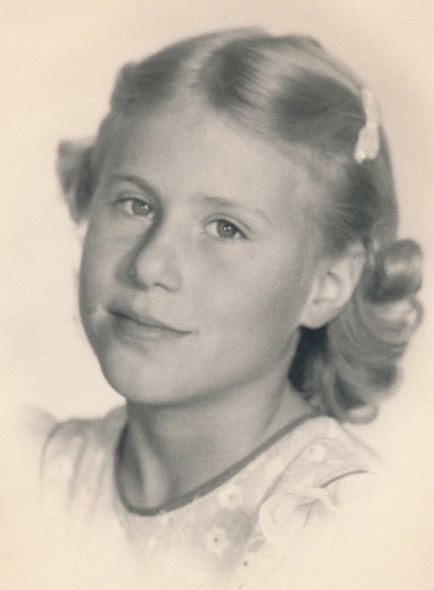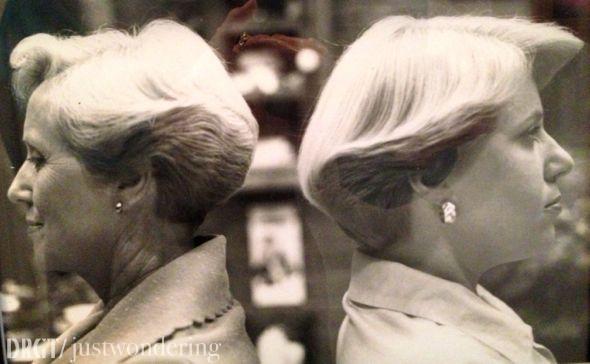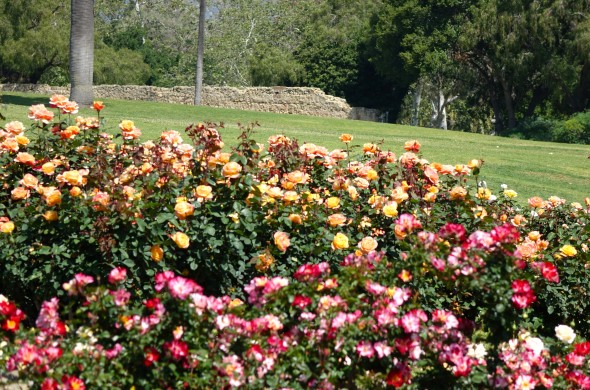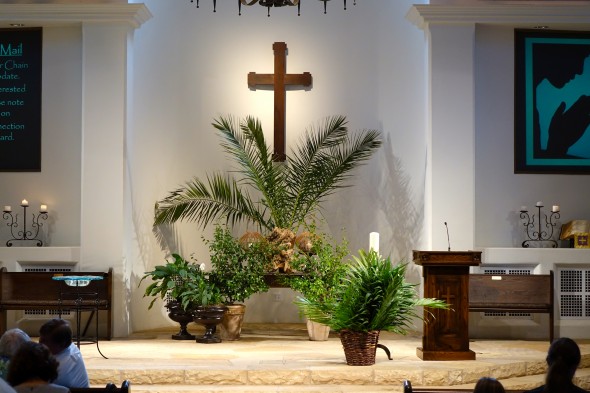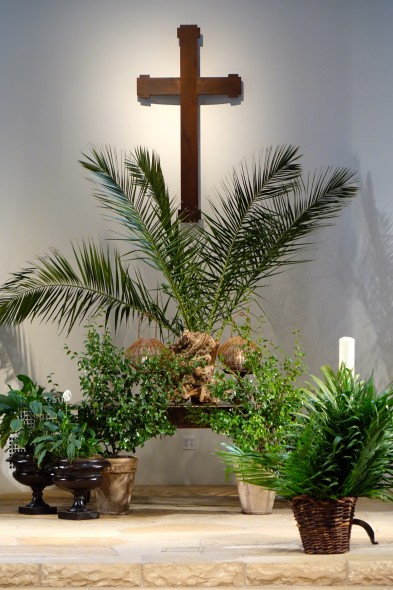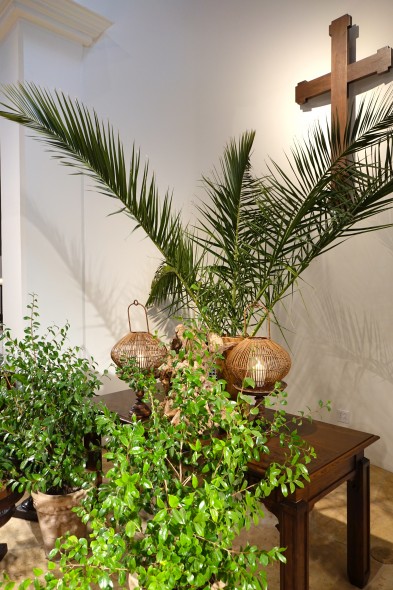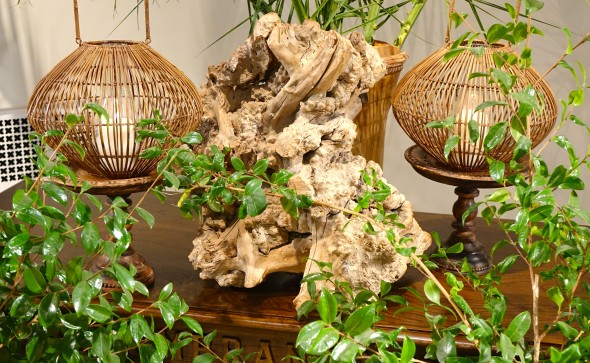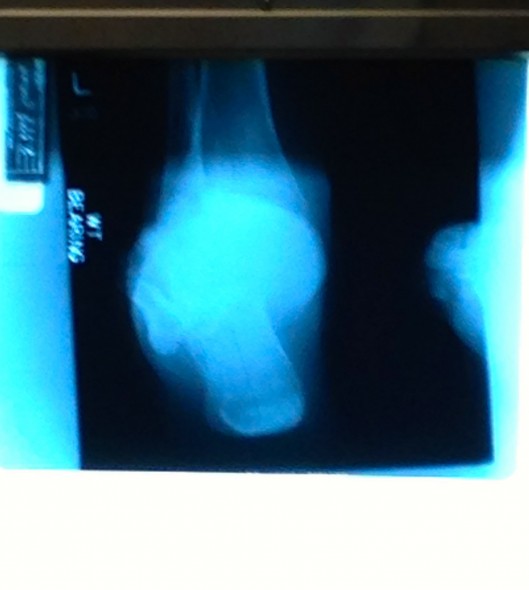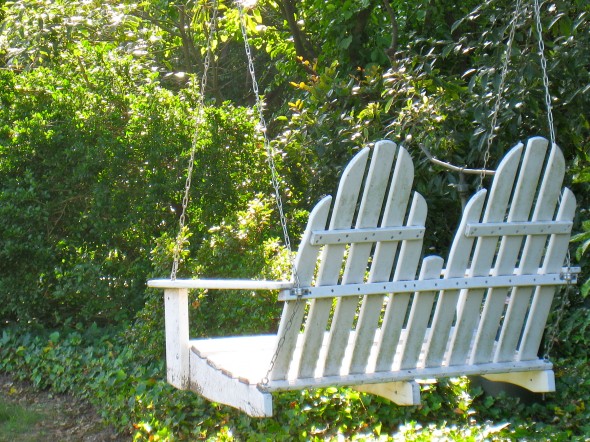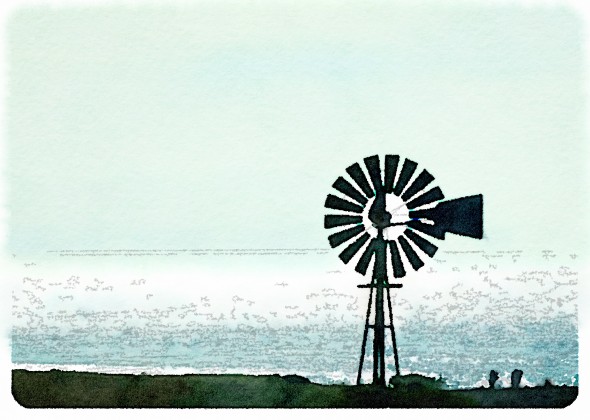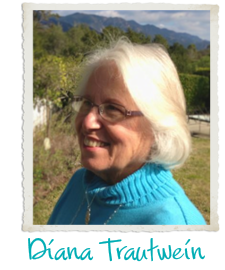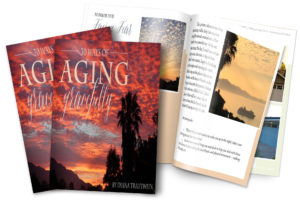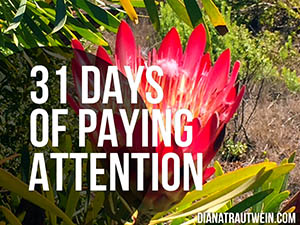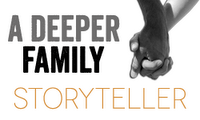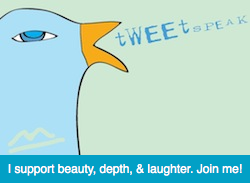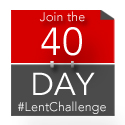
31 Days of Looking for the Little: Remembering

It’s Not That Easy Being Weird — A Guest Post
One of the best books I’ve read this year is Michelle DeRusha’s beautiful, funny, and profound memoir called “Spiritual Misfit.” I’m honored to be guest-posting for her today, in her ongoing series about being a misfit. Here are the opening paragraphs of that essay . . .
All my life, I’ve been the one who didn’t quite fit. No matter where I’ve landed in my own spiritual journey, I’ve managed to be the one who is different — quirky, opinionated, on the edge.
I was the kid who had the most memory work badges and sang alto in the kids’ choir at our first church. But I was also the kid who hid out in the caretaker’s apartment, playing with his baby and talking to his wife instead of socializing around the punch bowl with the rest of the 5th graders.
We moved to a new town and a new church when I was 12. The youth group was huge and I went to every thing that was offered. I landed in the hard-working-leadership-tier, but never in the popular-kids-who-also-have-skills elite. And that was okay by me. I was tall and rangy and not terribly graceful. I was also physically fearful and lurking underneath my loud voice, an insecure, uncertain teenager.
I married young. It was a great decision for us, one that took us halfway around the world to live and work for two years. And I was really a misfit there. A southern California conservative looks nothing like a Pennsylvania holiness conservative and I found that out the hard way. Yet, somehow, we survived and even thrived in that beautiful place.
We had our kids early, and our grandkids even earlier. So for the last 40 years, we’ve been ahead of the curve by a long shot. And guess where that puts us now? Smack dab in the middle of just about everything. We find ourselves sandwiched between ailing parents, home-buying adult children, college-aged and pre-school grandkids.
We’ve found ourselves sandwiched between generations theologically, too —
Please come on over to Michelle’s beautiful space to read the rest of this weirdness. . .
The Silence
There is a silence that stills and calms, that builds and creates. A stillness that makes space for the Spirit, for the self, for the tender work of undoing, for the plowing under of tired ideas. Yes, please. I want to sign on for that kind of silence, the one that opens and releases.
There is also a silence that kills, whether by intention or not, it kills. We went to a matinee yesterday and saw a truly magnificent film called, “Railway Man,” starring Colin Firth, Nicole Kidman and Stellan Skarsgard. Rarely have I seen such a powerful depiction of the kind of silence that kills than the one we saw in this moving true story about the power of forbidden memories to permanently cripple the human spirit. Only when he looks hard at the past is the railway man free from it.
The past few days, I have been brought low by a different kind of silence, this one the silence of neglect and privilege and a profound unwillingness to look at what is truly ugly in this world. On April 14, nearly 300 young women, living at a boarding school in Nigeria, were kidnapped by a terrorist military group, taken off into the night, most of them never to be seen again. The western news media, at least on our continent, was silent.
There has been a lot of noise about Donald Sterling, some of it deserved. There has been a lot of coverage about the downed Malaysian airliner that will not be found. There has been a lot of deafening silence about these girls, the hope for the future, the brightest and the best. They were taken because they had the audacity to try and grow, to learn, to become fully human. They were taken because they are girls and therefore ‘deserve’ nothing better than to be sold on the open market. Until the last few days, there has been not one word about any of it.
And yet, we spend so many words on old men with foul mouths, on ‘beautiful’ people with way too much money and way too little intelligence. We — and I mean ME — don’t hear what we don’t like, don’t see what we don’t want to see, and try to protect ourselves from the terrible truth that humankind is capable of immense evil, and that such evil, left unremarked, will destroy everything and everyone in its path.
Yesterday’s matinee was a reminder that the underbelly must be looked at, reckoned with and walked through if there is to be hope for wholeness. So some of us are choosing to highlight this truth by doing a small act of . . . silence.
In honor of these young women, remembering that each and every one has a mother desperate for reunion, several of us who blog regularly will go silent on Mother’s Day. This blog is one of those, and it will not be accessible for those 24 hours. Instead, there will be a link to a magnificent post written by Deidra Riggs (and made available through the technical and empathetic abilities of Lyla Lindquist) which outlines why we’re observing this silence on this day.
Silence in the blogosphere does not mean silence in our hearts, in our minds, even in our mouths. So, I encourage you to pray, to sign petitions, to speak the truth in love and bring these girls — and all those who are captive — to freedom, to home, to hope.
Remembering When
Both Laura Brown and Jessica Turner have invited bloggers to post old pictures and tell stories about them in a meme called “Throwback Thursday.” Laura’s is specifically tied to her lovely book, “Everything That Makes You Mom,” and the request from her was to share an old picture taken with my mom. I don’t have many of those, at least not in digital form, so these three will have to do.
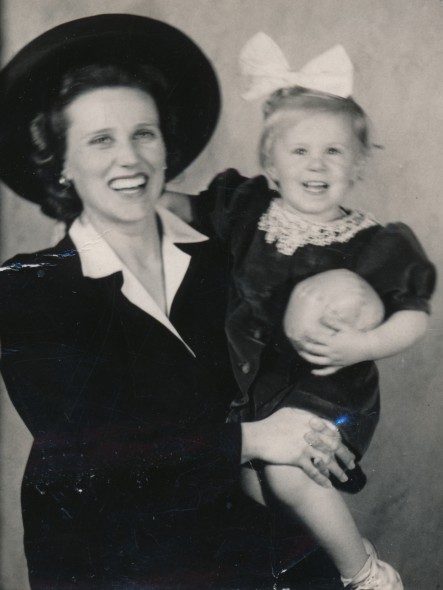
My mother, in her heyday, was truly a larger-than-life person.
That hat, for instance.
And the gigantic bow atop my head.
She started those bows when I could barely hold my head up,
ostensibly to announce to the world that this was a female child.
Apparently my baldness led many to believe I was a boy,
and my mom was having none of that!
I was a much-wanted child, long-awaited, and adored by my dad.
My relationship with my mom was more complicated,
very different from the easy, quiet companionship I enjoyed with my father.
Part of that is because my mother was a flaming extrovert —
easily the most socially gifted person I’ve ever known.
My father was quiet, reserved, careful.
Mom was glamorous, dramatic,
a loud laugher and a loud crier.
She was also an extraordinarily creative homemaker and hostess,
usually operating on the slimmest of budgets.
She set beautiful tables, told wonderful stories,
often acting out each part,
and she brought light and laughter wherever people gathered.
She was also deeply insecure, believing herself to be
intellectually inferior to my dad and to most of her friends.
She had a mother-in-law who was sharp-tongued and
judgmental and a father who belittled and verbally abused her.
So when I was growing up, she depended on me to be
an emotional sounding board and a hands-on helper
with all things domestic.
For most of my growing-up years,
she was my very best friend.
I idolized her and thought she was the smartest
and most beautiful woman I knew.
and I tried to please her in every way I could.
My mother loved me and, most of the time,
she also liked me.
She struggled to understand me, however.
In some ways we are similar, sharing
a lot of the same interests and laughing
at the same jokes.
But in other ways, we are most definitely not alike,
and during those early years,
I intuited that it was not okay to step outside the box she drew,
the box of acceptable behavior and language,
of dreams and goals.
She worked hard at being a mom.
Until the last two years of high school, she made almost all my dresses.
She coached me in public speaking when I was ten,
helping me to be at ease in front of hundreds of people —
and to enjoy doing it, too.
Although she never finished college,
she read widely and well,
and she had a great facility with language.
I remember being given a long list of my mom’s favorite authors
when I was in elementary school,
then walking through the traveling library-van to find them.
I read voraciously, from about grade two right up until today.
Because of her encouragement, I read well above my
grade level and in the process, learned a whole lot
of great vocabulary words. How?
Whenever I came to a word I didn’t know,
I’d spell it out and she would pronounce it and
tell me what it meant.
I thought she was the smartest woman I knew.
And the most beautiful.
And, of course, she is the most genuine extrovert I know,
always smiling that 100-watt smile,
reaching out with a hand to touch an arm
or a shoulder, offering kind words
and a gentle laugh.
Even in the midst of her dementia,
she does these lovely things,
saying ‘thank you so much,’
and ‘I’m so glad to meet you,’
and, ‘Have you met my daughter?’
Yes, Mom. I’ve met them all. Many times.
But I’m happy to meet them again. And again.
 She is still one of the most beautiful women I know.
She is still one of the most beautiful women I know.
And she is still that flaming extrovert,
gifted with social skills that she uses with grace and aplomb.
The vocabulary is shrinking by the day,
as she loses more and more of her ability to communicate.
I miss her.
I miss our good conversations, our shared reading projects,
our party planning and execution.
And I am so deeply grateful for her and to her:
for being such a terrific mother in so many ways;
for modeling marital commitment through thick and thin;
for being a lifelong learner, genuinely fascinated
by this world and all its wonders;
for her deep, seeking heart,
hungry for God and goodness.
She taught me so much.
And she still does.
Joining this with Jessica at The Creative Mom’s Thursday link-up.
AND — Mother’s Day is right around the corner and Laura Lynn Brown’s beautiful, small book is a perfect gift, especially if you fill it with some good, shared stories. You can order it here.
A Muscular Savior
So. It’s been quite the weekend. Beautiful weather on Saturday, with a little fog wiggling its way along the shoreline, clearing to bright blue skies above city and mountains. A drive by the Old Mission reminded me that spring has indeed sprung, with the Mission rose garden sending glory sparks all round. Brilliant blooms, redolent and heavy with sun and scent.
And Sunday morning began, as it usually does with pre-worship on the bluffs. This week, there were dolphins. Dolphins! Creatures who speak to me of God with their beauty, grace and sense of fun. I loved catching this glimpse of a shiny tail, splashing the surface.
Turns out, there was an entire pod making its way south, rolling and skimming along. As I watched them frolic, I had quite a lengthy conversation with God (courtesy of my iPhone notes app) about my own struggles right now. And for the second time during this Lenten season, I was reminded that sometimes resurrection requires death, healing needs a kind of dying first. Not exactly the answer I wanted to hear, but I tried to take it in with a semblance of grace and acceptance.
Just before I left to drive up the hill for worship, an acorn woodpecker dropped onto a low-hanging branch and tapped away. His cheerful topknot doesn’t show against the intense morning sun, but I caught glimpses of it a few times. Woodpeckers don’t usually come so low, so close to the ground and us human creatures. They’re notoriously shy, despite their noisy presentation, so I was glad to see this guy at eye level.
The sanctuary had been transformed for our Palm Sunday celebration. The dry branches of Lent gave way to deep green palms, potted plants, lighted lanterns, setting the garden scene beautifully as we walked into the sanctuary.
We’ve been creating our own lectionary this year, moving through the gospel of John since last September. John doesn’t tell the story of the triumphal entry; he enjoys playing with the timeline, shifting the emphasis, creating a beautiful, literary, deeply theological gospel. He puts the table-turning — an event which follows right after the palm procession in the other gospels — way back in chapter two, establishing early the picture of a muscular savior, moving steadily towards his final glory, on that hill outside the city gate.
This week, this beginning of Holy Week, we were at chapter 18 and standing with Jesus in the garden. That garden of prayer and betrayal and arrest, a scene painted in strokes of agony and grief and failure by the other story-tellers in our New Testament. But John? He gives us such a different picture! Jesus has prayed for all of us in the preceding chapter, a prayer for his friends and for us. So there is no praying in this garden scene. Instead of sweating-drops-of-blood, we meet a take-charge Jesus, a man who knows his destiny and strides toward it with commitment and energy.
It’s a seminal moment, this meet-up between Jesus and the soldiers. The soldiers who were led there by one of Jesus’s own. And Jesus meets them head-on, asking a clear question:
“Who are you looking for?”
Two times he asks. And two times, they answer, “Jesus, the Nazarene.” Each time, he says clearly, “I am he.” The second time, he even adds these words: “If it’s me you’re after, let these others go. . .” releasing his disciples. In John’s version, they do not flee, they are set free.
They are set free!
Peter — of course, it would be Peter! — whips out his trusty sword and cuts of the ear of the servant of the Chief Priest. And Jesus will have none of it. NONE. He turns and says ferociously, “Do you think I will not drink this cup? This cup given by my Father?”
This is one strong dude here. A man who sees his future clearly and embraces it, suffering and all. Not because he is a glutton for punishment; not because the Father is a sadist of some sort; not because the forces of Rome and religion are victorious and he is a loser. NO.
Those who arrest him, even he who betrays him — these are not the enemies in John’s rendition. They are the necessary implements who put God’s redemptive work into action, the players who take Jesus down that road to the cross and eventually, to another garden. The EASTER garden. The one where we learn the powerful truth that we are indeed free. Free at last!
In John’s telling, Jesus is Christus victor, the one who triumphs over sin, death, the grave. Over brokenness, betrayal, pain. Over anxiety, depression, illness of all kinds. Over it all.
And he does it without flinching, without second-guessing, without question.
For me, this year, this is the picture I need. It is yet another reason why I am so deeply grateful for all four of our gospel accounts, for their unique vision, purpose, structure, story-telling.
Some years, I need to read about Gethsemane — to weep with Jesus, to pray fervently, to try to stay awake, to be faithful.
But this year?
This year, I need to hear Jesus say, “Who are you looking for?” And I need Jesus to tell me I am released — I am set free, I am blameless. And I need Jesus to model for me courage and commitment and unflinching resignation — no, scratch that. Unflinching welcome of the pain that lies before him.
An embrace of the dying that is to come, looking ever forward to RESURRECTION.
Headed into surgery on this foot in early June to repair (hopefully) a badly torn tendon
and to break and reset a congenitally off center heel bone.)
I need to hear the “I am,” the clear, calm cry of identity that John puts into the mouth of our savior at least eight times throughout his gospel. “I am” — he tells those who will listen — I am the living water, the bread of life, the light of the world, the gate for the sheep, the good shepherd, the resurrection and the life, the way the truth and the life, the vine.
And here, right here in that last garden? “I am,” says Jesus. “I am the one you seek.”
That old, strong, breath-filled name that the God of Israel gave to Moses. That name that could not be spoken, but only breathed. That name, that name. “I am.”
Oh, Jesus.
Be the “I am” in my life!
Stride right through the pain and confusion, the uncertainty and the fear, the injury and the hard work of breaking and mending. Help me to see you, strong and steady. Help me to hear you, clear and calm. Help me to know you, to know you.
To see and remember the beauty of the roses, the joyous abandon of the dolphins, the cheerful tapping of the woodpecker, the green beauty of the palm fronds, the flickering lamps of the soldiers, and your gift of freedom and release to those who are your friends.
Thank you that you call me exactly that, your friend. I’m counting on that.
My deep thanks to Don Johnson, Jon Lemmond, Bob Gross, Martha Johnson, Jeanne Heckman and every member of the worship team and the office/administrative staff who contributed to yesterday’s celebration. I look forward to the events of this whole week because of your dedication and creativity.
Which Mirror? — SheLoves
Can I just tell you what a privilege it is for me to post with the remarkable group of women gathered over at SheLoves magazine? Such beauty and goodness flowing over there. Our theme for April is “Mirror.” And here’s part of what came to me on this topic. You can follow me over to their site to read the rest of this piece. . .
I remember visiting an elderly parishioner who had a treasure trove of beautiful antique furniture in her home. The house itself was a Craftsman bungalow, with built-ins, high ceilings topped by crown molding, and beautiful wood trim around every door and window.
She owned several old dressers, with lovely framed mirrors attached, and there was one mirror in particular that I enjoyed. It had been in several homes over the years, and somewhere along the way, had lost a fair amount of its silvering, causing a series of dark spots to appear, especially around the edges.
When I looked in that mirror, I liked what I saw. And may I just say — that’s a fairly rare occurrence in my life? Generally, I avoid mirrors. And cameras, unless I’m shooting the pictures myself. I don’t like my image very much. I’m working on it and have actually mustered up a fair amount of what feels very close to affection for the tired, older face I see these days.
But when I was visiting this home, I pretty much avoided mirrors, except to do the most basic daily ablutions or to check for spinach between my teeth. Yet somehow, that old, spotted mirror was easier for me to look into.
Why?
Because if I positioned myself just right, I could blot out the parts of my body that I liked the least. And because the old silver could no longer hold as much light as it once did, everything else about me faded into a more impressionistic version of reality. I liked seeing less, I liked seeing a toned down version of the real me.
The real me, you see is quite often too much. I am too tall, too heavy, too opinionated, too candid, too loud, too bossy. And when I look in the mirror, I am uncomfortably reminded of all of that ‘too much-ness.’ And the truly weird thing about all this too-much is that it leads to my feeling a whole lot less-than most of the time.
Slowly, and with a large dose of intentionality, I am learning to look for different kinds of mirrors in my life. I’m not sure I’ll ever love what I see in the mirrors hanging in my home, but I think I’m making progress. And I think I’m heading in the right direction when I choose to see myself in some different kinds of reflective surfaces . . .
Join me at SheLoves to find out where I try to look now to see a truer version of me . . .
On Vulnerability and Boundaries — A Guest Post for Nacole Simmons
In the fall of 2006, I got a new boss. He arrived on the scene after two years of searching, two years marked by upheaval in my life, personally and professionally. I had been working as an Associate Pastor, part-time, for almost ten years by then, and I was deeply relieved to welcome him and to learn to work with him and for him.
One of the first things he asked me to do was start a blog. Yes, you read that right. My boss, the senior pastor, asked me to begin writing on a blog. He already had one, and used it for brief reflections on life and ministry, very rarely for anything personal.
But I’m not wired in the same way, and when I was invited to write, I chose to get pretty vulnerable, pretty quickly. And I loved it. I was careful, especially when trying to write out the difficulties that always attend a new working relationship. I tried to make it about me, and what I was thinking/feeling. And, for the most part, I found my way to a pretty good balance. I posted infrequently, about once or twice a month for that first year. I learned to import photos, and often chose to write about my family, especially my grandkids.
But in July of 2007, something hard happened. Our son-in-law was in the midst of a long and very difficult dying, suffering from the after-effects of intensive radiation to his head and neck when he was a teenager. Our daughter was trying to finish a masters’ degree in special education, so that she could go to work after fifteen years as a homemaker. Her husband was on full disability at that point, and they desperately needed medical insurance. Her program required a 10-week internship at a hospital 400 miles north of her home and she worked like a champ to make everything happen. Some weeks, her husband was well enough to go with her, but some weeks, he needed to be closer to home.
We housed her husband and two younger sons (the eldest was working at a camp on Catalina Island that summer) for one of those closer-to-home weeks. And that experience was one of the most difficult times I’ve ever walked through. Watching someone you love suffer — and watching how that suffering impinges on the lives of two young people — well, it was hard, sad, painful. . . there are no words.
But I tried to find them anyhow. I wrote a post, not using names, about watching this particular kind of suffering. I finished it late one night, posted it and went to bed. At 7:00 the next morning, I went in and removed it, feeling unsettled about writing something so deeply personal.
The post was up for less than twelve hours.
But in that time, someone close to him found it and was deeply wounded by it. I was crushed — repentant, sorrowful, so sorry for causing pain and for further complicating my daughter’s life. My heroic girl was already exhausted and overwhelmed and my post made everything worse.
I crossed a line, one that I deeply regret.
Please follow me over to Nacole’s site to read the rest of this post . . .
Ribbons ‘n’ Roses — Reflections on Creative Arts as Ministry for The High Calling
This essay was written several months ago and shifted between editors at The High Calling. It’s posting today during a week of emphasis on visual and creative arts as ministry. Click here to read the entire piece. . .
The sun would just be coming through the early morning clouds as I drove through the quiet, on my way to the Flower Mart in downtown Los Angeles. It was part of the ritual, the dance, of doing this work that I loved. I only did it part time and I only did it for seven years, but I loved it.
It began with our eldest daughter’s wedding. We were on a budget, I enjoyed working with flowers and I saw an opportunity inviting me to leap. So I jumped in with both feet. I applied for a resale number from the state of California, hired a friend to design a logo and business cards, and “Ribbons ‘n’ Roses” was born.
I worked with a good friend to produce beautiful floral décor for about two weddings or parties every month. I loved the creativity, the people, and the beauty of each arrangement, but I suppose my favorite part of all was that early morning drive to the Flower Mart, a place packed with rich delights and unholy confusion. Most of the mart is contained in one enormous, two-story warehouse with scores of individual flower vendors and one large supply center. Driving into the garage while it is nearly dark and then emerging into this brightly lit, bustling activity center is an exercise in delightful cognitive dissonance.
Carts and trucks are loaded, advice is given, cash is handed over, packages are wrapped—all of it infused with the sweet scent of flowers. With the car loaded and my bills paid, I would usually end the morning with breakfast at the adjacent Chinese diner. I would listen to conversations between buyers and sellers as they ate their char siu pork, rice, and eggs, absorbing as much information as I could.
I had no training, you see . . .
The Devil Walks in Mattingly — A Book Review
Secrets are powerful things. And the deep woods around Mattingly, West Virginia, hold so many of them. So do the trio of lead characters who inhabit this hauntingly beautiful novel by Billy Coffey. This is a terrific book — in every sense of that word. It is lyrically written, every detail crafted with care and attention. And it is also a hard, dark story, one that delves into the hidden corners of the human psyche with both wonder and a healthy amount of fear.
Jake and Kate Barnett are lifelong residents of this small town, and they carry the heavy weight of regret every minute of every day. As their high school career wound down to its end, each of them were key players in the death of a classmate, Philip McBride. An outsider and a misfit, Philip’s death had been ruled a suicide. But the Barnetts knew better, and each of them lived under the shadow of that secret for a very long time.
As the events of this fine story begin to pile on top of one another, we meet another key player in that long ago event, Taylor Hathcock, a hermit, a madman and a magician, in his own strange way. Each of these three, and all of the supporting players are lovingly and carefully drawn. This is a town that lures the reader in, populated as it is with such complicated, messed-up, and fascinating people.
I’ve been a fan of Billy Coffey’s for several years now, discovering his blog in early 2011 and enjoying his weekly posts. I reviewed his last novel a year ago. I loved it — and I like this one even better. Coffey’s writing has deepened and expanded; every character rings true, each one carrying just enough quirkiness to be both believable and interesting.
By the end of this story, there is redemption to be found, with a lot of what some might call ‘magical realism’ thrown in. I think what I most enjoyed was the way in which Coffey refuses to let these characters be victims of either their circumstances or of the unseen hand of fate. Instead, we’re allowed to see how wrong choices — bullying, teasing, keeping dangerous secrets — can bring disastrous results, yet none of those results is beyond redemption and transformation.
Redemption in Mattingly begins in small ways, with strange dreams, white butterflies, dandelions. Eventually, there is a visit from beyond the grave, a lot of nail-biting drama (including an ancient bear and a ‘thin place’ in the woods) culminating in the palpable relief that can only be found by telling and knowing the truth.
Along the way, Billy offers some profound insights into the connections between this world and the next. I love this paragraph, from one of Jake’s dream encounters with the long-dead Philip. It comes near the climax of the story:
“. . . remember, our tears are gone on the other side. wiped clean by the very hand of love. Memories haunt you on your side of the veil, Jake, but on mine there is only their beauty. On my side, you see every life is magic. You see you were led even as you thought you wandered, and there was a light even in your darkness. And sometimes you are even given the grace to come back. To set things right.”
And that is what this story is truly about: setting things right. It’s not easy, but it is beautiful to watch. I highly recommend this lovely story and I look forward to meeting more of Mattingly’s inhabitants in years to come.
I was given an advanced readers’ copy of this book in exchange for my honest review. This is that review — click on over to your favorite bookseller and order it now. You will not regret it. Here’s a link to Amazon. There is also a link below to the first 35 pages of this wonderful story. Enjoy!
Show Me the Way — Reflections on Retirement for The High Calling
I’m writing at one of my favorite places today — The High Calling, working this time with Sam Van Eman as part of a series on transitions. Join me there to read the whole essay — and engage in the conversation.
For nearly 25 years, my life looked like this: raising three children, volunteering in church and community, editing school newsletters, teaching Bible studies, and hanging a whole lotta wallpaper (It was the 70s, remember wallpaper?). I think they called what I did then, ‘staying home;’ all I know is that it was the hardest and most rewarding work I’ve ever done.
In my early 40s, our family life began to shift. My kids were in college, with the eldest one married and the younger two getting closer to marriage every day. I attended a day-long retreat that offered interaction with career counselors, and began to dream about possibilities for the second half of life.
I thought about teaching. I began a small floral business in my garage. I talked to God, my husband, my children, and my friends.
And then there was this pastor/friend who gently suggested that I consider enrolling in the fine seminary just five miles down the hill from our home. That idea resonated deep inside me, and I began to ponder what it might mean.
About five years later, I began my life as a seminary student. There I experienced a direct call from God to pursue ordination and work as a member of a church staff. I graduated when I was 48, took an unpaid position for three years while I jumped through hoops for ordination, and then—at 52—began a 14-year commitment as Associate Pastor about 120 miles north of our home in the San Gabriel Valley. My husband and I made the move. He commuted to his own job until we both retired in 2010.
I’m not sure I can find words to describe how difficult it was to make that last transition. Retirement. I loved being a pastor. I had done hard work to become one, and I wasn’t sure what not being a pastor would look like in the community in which we now live. I had only ever been a pastor here; a member of the workforce. No one knew me as a family person, my former primary identity. Who would I be now?
So I did a lot of prayerful listening—listening to the Spirit’s words within me, listening to my family and my friends, to my co-workers, and to the deepest parts of myself . . .
Please click here to read the rest of this post . . .

